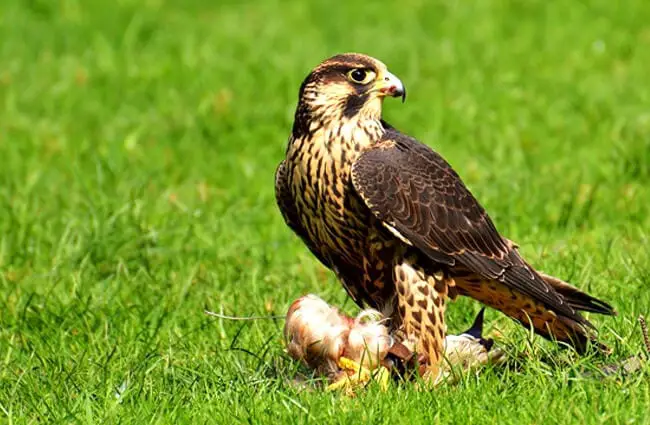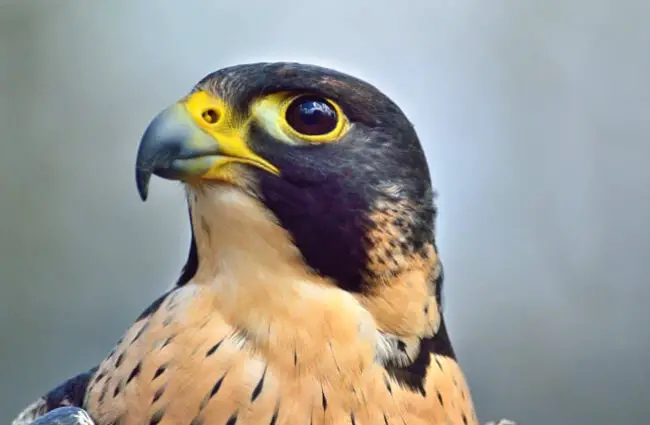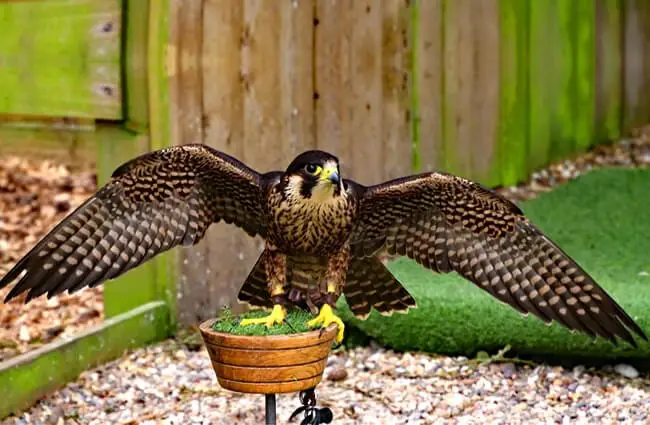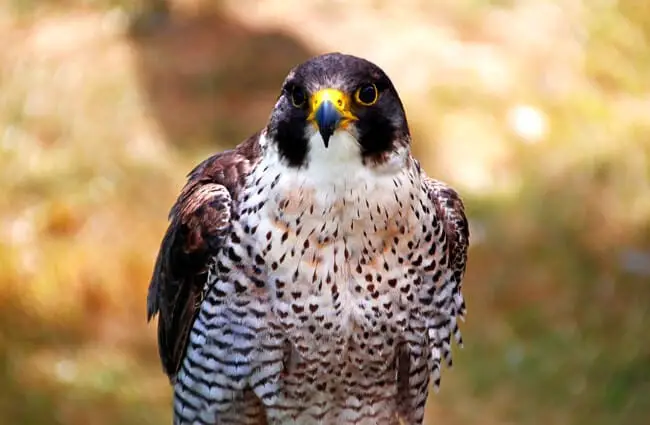In the vast tapestry of the natural world, few creatures command as much awe and respect as the Peregrine Falcon. This avian marvel, a true icon of speed and aerial prowess, has captivated observers for centuries. From its breathtaking hunting dives to its remarkable adaptability, the Peregrine Falcon embodies the wild spirit of our planet. Join us on a journey to uncover the secrets of this magnificent raptor, exploring its life, its legacy, and its enduring connection with both the environment and humanity.
Often hailed as the fastest animal on Earth, the Peregrine Falcon (Falco peregrinus) is a medium-sized raptor renowned for its incredible speed during its hunting stoop. This dive, executed from great heights, can see the falcon reach speeds exceeding 200 miles per hour (320 kilometers per hour), making it an unparalleled aerial predator.

A Global Citizen: Habitat and Distribution
The Peregrine Falcon boasts one of the most extensive distributions of any bird species, found on every continent except Antarctica. This widespread presence speaks volumes about its adaptability, allowing it to thrive in a diverse array of habitats. From towering coastal cliffs and rugged mountain ranges to vast open wetlands and even bustling urban centers, the Peregrine Falcon makes its home wherever suitable nesting sites and abundant prey are available.
These adaptable birds prefer open country, which provides ample space for their high-speed hunting maneuvers. They are often found near water bodies, such as rivers, lakes, and coastlines, as these areas tend to attract large numbers of their primary prey: other birds. In recent decades, Peregrines have increasingly colonized human-made structures, utilizing skyscrapers, bridges, and even industrial smokestacks as substitutes for natural cliff ledges, demonstrating a remarkable capacity for urban adaptation.
For the aspiring wildlife observer or animal lover hoping to spot a Peregrine in the wild, key locations include coastal areas with cliffs, large river valleys, and major cities with tall buildings. Look for them perched high on ledges, scanning the skies, or listen for their distinctive, sharp calls. Patience and a good pair of binoculars are essential tools for a successful sighting.

The Apex Aviator: Diet and Hunting Strategies
The Peregrine Falcon is a highly specialized predator, with its diet consisting almost exclusively of other birds. Its hunting technique is a marvel of natural engineering and precision. The iconic “stoop” begins with the falcon soaring to immense heights, sometimes over half a mile (800 meters) above its prey. Once a target is identified, the Peregrine folds its wings back into a streamlined “teardrop” shape and plunges earthward in a controlled dive. During this descent, its eyes are equipped with specialized nictitating membranes that act like built-in goggles, protecting them from the extreme air pressure.
The impact with its prey, typically struck with clenched talons, is often fatal, either killing the victim outright or stunning it into submission. The falcon then circles back to retrieve its fallen meal, often consuming it on a high perch or returning to its nest. While small to medium-sized birds like pigeons, starlings, and shorebirds form the bulk of its diet, Peregrines are opportunistic and may occasionally take bats or even large insects, especially during migration or when other prey is scarce. This selective diet and efficient hunting method make the Peregrine a crucial component of its ecosystem, helping to regulate populations of various bird species.
Life Cycles and Legacies: Mating and Reproduction
The reproductive cycle of the Peregrine Falcon is a testament to dedication and parental care. Peregrines are monogamous, with pairs often returning to the same nesting sites year after year. Courtship displays involve spectacular aerial acrobatics, including synchronized flights and dives, solidifying the pair bond.
Nesting typically occurs on cliff ledges, tall buildings, or other elevated structures that offer protection from predators and a clear view of the surrounding territory. Unlike many birds, Peregrines do not build elaborate nests. Instead, they create a shallow scrape in the dirt or gravel of a ledge, known as a “scrape.” The female usually lays 3 to 4 eggs, which are typically reddish-brown with darker markings.
Both parents share incubation duties, which last for about 29 to 32 days. Once hatched, the chicks, known as “eyases,” are covered in fluffy white down and are entirely dependent on their parents for food and warmth. The male is primarily responsible for hunting during this period, bringing prey back to the nest, where the female tears it into smaller, manageable pieces for the young. The eyases fledge, or take their first flight, at around 35 to 42 days old, but they remain dependent on their parents for several more weeks as they hone their hunting skills. This extended period of parental guidance is crucial for their survival and eventual independence.

An Ancient Lineage: Evolution and Subspecies
The Peregrine Falcon belongs to the genus Falco, a group of raptors characterized by their long, pointed wings and powerful flight. Its evolutionary history stretches back millions of years, placing it firmly within the lineage of true falcons. While specific fossil records are sparse, genetic studies suggest a common ancestor with other falcon species, evolving into the distinct Peregrine we know today. Over time, geographical isolation and adaptation to local environments have led to the development of numerous subspecies, each with subtle variations in size, plumage, and migratory patterns. These subspecies, such as the Arctic-dwelling F. p. tundrius or the larger F. p. anatum found in North America, highlight the species’ incredible genetic diversity and capacity to thrive across vastly different climates and landscapes.
The Peregrine’s Place: Ecosystem Role and Interactions
As an apex predator, the Peregrine Falcon plays a vital role in maintaining the health and balance of its ecosystem. By preying on a wide variety of birds, it helps to regulate populations, preventing overgrazing or disease outbreaks that could impact other species. Its presence is often an indicator of a healthy environment, as it requires a robust prey base and relatively undisturbed nesting sites.
Interactions with other animals are primarily predatory, but Peregrines can also face competition from other raptors, such as Great Horned Owls or Golden Eagles, for nesting territories or food resources. They generally avoid direct confrontation, relying on their speed and agility to dominate their aerial domain. Their impact on prey populations is significant, often targeting the weak or less vigilant, which contributes to the overall fitness of the prey species.
Peregrines and Humanity: A Shared History
The relationship between Peregrine Falcons and humans is a rich tapestry woven with threads of admiration, utility, and conservation.
Cultural Significance
For millennia, the Peregrine Falcon has held a special place in human culture. Its speed, power, and regal bearing made it a prized bird in the ancient art of falconry. Dating back thousands of years, falconry involved training these magnificent birds to hunt alongside humans, a practice that forged a deep bond between falconer and falcon. This tradition continues today, albeit in a more regulated and conservation-focused manner, showcasing the Peregrine’s intelligence and trainability. Beyond falconry, the Peregrine has been a symbol of nobility, freedom, and strength in various cultures, appearing in heraldry, literature, and art.

Conservation Success Story
The mid-20th century brought the Peregrine Falcon to the brink of extinction in many parts of the world, primarily due to the widespread use of the pesticide DDT. This chemical accumulated in the food chain, causing Peregrine eggs to become thin and brittle, leading to reproductive failure. However, thanks to dedicated conservation efforts, including the banning of DDT, captive breeding programs, and reintroduction initiatives, the Peregrine Falcon has made a remarkable comeback. This success story stands as a powerful testament to what can be achieved when humans commit to protecting wildlife, moving the species from endangered to a stable, thriving population in many regions.
Coexistence and Urban Adaptations
The Peregrine’s ability to adapt to urban environments has led to fascinating new interactions with humans. Nesting on skyscrapers and bridges, they provide city dwellers with a unique glimpse into the wild. For hikers or casual observers who encounter a Peregrine Falcon in the wild, the best course of action is respectful observation. Maintain a safe distance, avoid disturbing nesting sites, and never attempt to approach or feed the bird. Simply appreciate its presence from afar, allowing it to continue its vital role in the ecosystem undisturbed.
Caring for the Captive Peregrine: A Zookeeper’s Guide
For zookeepers entrusted with the care of Peregrine Falcons, a specialized approach is required to ensure their health and well-being. These magnificent birds thrive on a diet of whole prey, mimicking their natural diet. This typically includes:
- Small birds (e.g., quail, chicks)
- Rodents (e.g., mice, rats)
- Occasionally, rabbits or other small mammals
All prey should be humanely sourced and, if possible, varied to provide a full spectrum of nutrients. Supplementation with vitamins and minerals may be necessary, especially for growing birds or those with specific health needs, always under veterinary guidance.
Enclosure requirements are paramount. Peregrines need ample space for flight and exercise. A large aviary with high ceilings is ideal, allowing for short flights and wing stretching. Key features of a suitable enclosure include:
- Perches: Varied in height and texture to promote foot health.
- Substrate: Easy to clean and maintain hygiene.
- Shelter: Protected areas from harsh weather and direct sun.
- Enrichment: Items like natural branches, water baths, and even rotating perches can stimulate natural behaviors.
Regular health monitoring is crucial. Daily checks for changes in behavior, appetite, droppings, and physical condition are essential. Routine veterinary examinations, including weight checks, feather condition assessments, and fecal analyses, help detect potential issues early. Preventative care, such as parasite control, is also a standard practice.
When caring for Peregrines, certain practices should be strictly avoided:
- Improper Diet: Feeding processed foods or an unbalanced diet can lead to severe nutritional deficiencies.
- Small Enclosures: Restricting flight space can lead to muscle atrophy, stress, and behavioral problems.
- Lack of Enrichment: A barren environment can result in boredom, stereotypical behaviors, and poor welfare.
- Stressors: Loud noises, sudden movements, or excessive human presence can cause significant stress to these naturally wary birds.
- Inadequate Hygiene: Poor enclosure cleaning can lead to bacterial or fungal infections.
Understanding and respecting the Peregrine’s natural instincts and needs is the cornerstone of successful captive care.

Fascinating Falcon Facts: A Compendium of Wonders
The Peregrine Falcon is a creature of endless fascination. Here is a list of intriguing facts that highlight its unique attributes:
- The name “Peregrine” comes from the Latin word peregrinus, meaning “to wander” or “foreigner,” referring to its extensive migratory habits.
- Peregrines have a distinctive “malar stripe” or “mustache” on their face, which is thought to reduce glare from the sun, similar to an athlete’s eye black.
- Their eyesight is incredibly acute, estimated to be 2 to 8 times better than that of humans, allowing them to spot prey from vast distances.
- During a stoop, the Peregrine Falcon can experience G-forces similar to those of a fighter jet pilot, thanks to specialized bone structures and respiratory adaptations.
- Female Peregrines are typically larger and more powerful than males, a phenomenon known as reverse sexual dimorphism, common in raptors.
- Peregrines can live for up to 15 to 20 years in the wild, though the average is often shorter due to environmental challenges.
- They are highly territorial during breeding season, fiercely defending their nesting sites from intruders.
- The Peregrine Falcon is the national bird of the United Arab Emirates.
- Their powerful talons are specifically adapted for grasping and holding prey mid-flight, with sharp, curved claws.
- Despite their fierce hunting prowess, Peregrines are not known to attack humans, preferring to avoid confrontation.
The Peregrine Falcon stands as a powerful symbol of nature’s resilience and the incredible wonders of the avian world. Its story, from its ancient lineage and unparalleled speed to its dramatic recovery from the brink of extinction, serves as an inspiration. By continuing to understand, appreciate, and protect these magnificent birds, we ensure that future generations will also have the privilege of witnessing the Peregrine’s breathtaking flight across our skies.

![Red Angus Closeup of a beautiful Red Angus cowPhoto by: U.S. Department of Agriculture [pubic domain]https://creativecommons.org/licenses/by/2.0/](https://animals.net/wp-content/uploads/2020/03/Red-Angus-4-238x178.jpg)




![Red Angus Closeup of a beautiful Red Angus cowPhoto by: U.S. Department of Agriculture [pubic domain]https://creativecommons.org/licenses/by/2.0/](https://animals.net/wp-content/uploads/2020/03/Red-Angus-4-100x75.jpg)

